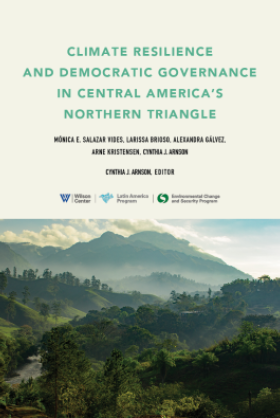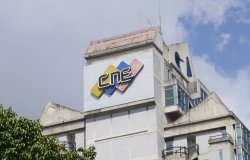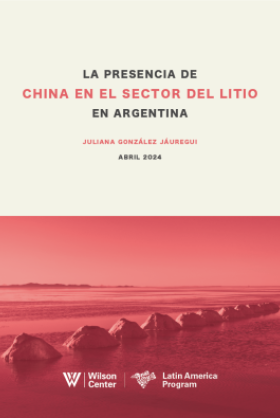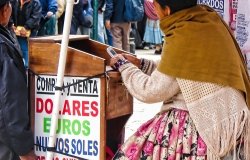Promises and Disillusionment: Affirmative Action and Race Relations in the United States and Brazil
Overview
Summary of a meeting with Paulo Menezes, Diva Moreira, and Rosana Heringer. Comments by Dr. Ronald Walters.
As the culmination of the Brazilian Public Scholars Program jointly sponsored between Brazil's Ministry of Culture and Brazil @ The Wilson Center, three Brazilian Public Scholars researching "Racial Comparisons between Brazil and the United States" had the opportunity to present their findings after a two-months of research in Washington, DC.
Paulo Menezes summarized the legal, applications, implications and background of affirmative action in Brazil in contrast with legal instruments existing in the International Convention on the Elimination of All Forms of Racial Discrimination and in various countries including Canada, The United States, India, Malaysia, Australia, New Zealand, Costa Rica, Kenya, Namibia, Zimbabwe, Spain, Italy, and Germany. He then explained the conceptual evolution of affirmative action in the Brazilian legal system, showing that affirmative action policies are created and developed based on the constitutionally provided principle of equality (art. 5). Paulo discussed the National Human Rights Plan of 1996, which laid the framework, and also subsequent policy and programmatic experiments throughout the Federal Executive Branch, the National Congress, Judiciary Branch, and State Government.
Diva Moreira discussed race relations and inequality in Brazil and US. When considering if the U.S. is an appropriate model for the Brazilian situation, Diva suggested that one must review both histories of oppression, including segregation, differences in racial classification, the question of solidarity, and the denial of widespread racism. Diva's analysis addressed many variables affecting the viability of the U.S. as a model of affirmative action. She concluded that the results of affirmative action policies have yet to show real improvement for the black population in the US. Turning to affirmative action in Brazil, Diva explained that strategies are non-explicit and results are often non-quantifiable. The lack of solidarity among social movements and discontinuity of sectoral/class-based policies coupled with a smaller federal government are significant obstacles to the future development of affirmative action in Brazil.
Rosana Heringer covered diversity programs in Brazil and the US, many of which came about as a result of increased awareness over the last decade of racism and racial inequality. According to Rosana, the failure of the "racial democracy myth" has led to a racially mixed society of separate social stratifactions for blacks and whites. She referenced a myriad of statistics to demonstrate the presence and need to improve upon the problem of large-scale racial inequality. Her research analyzed the practice of affirmative action and diversity programs adapted in both the public and private sectors and the direct impact of these programs in the promotion of opportunities to specific groups.
Rosana noted that the goals and objectives behind diversity initiatives as well as their relative inclusion in employment practices are centrally important to understanding how affirmative action policies have been implemented in the U.S. She believes that diversity initiatives require commitment, vision, target recruitment of minority groups, training, retention promotion opportunities, diversity training, supplier diversity, and a method of assessment to track results and make necessary changes. Looking at the U.S. as a model, Rosana noted that it is necessary take into account the litigious character of the North American society, current macro-economic conditions and their reflection in the labor market as well as the unfinished civil rights agenda. From the American experience, Rosana believes Brazil would be wise to glean the importance of a strong commitment to diversity, how to deal with the conflicts which will arise over implementation of affirmative action programs, long-term outreach programs, and the education of the workforce.
Dr. Ron Walters, of the University of Maryland, College Park, noted that the three presentations addressed distinctly important areas of this complex issue. According to Dr. Walters, after the "Million Man March" on Washington, Brazil had it's own 50,000 Man March, which brought about increased government interest in the plight of those traditionally discriminated against. This interest proved shallow, and was demonstrated in a stronger acknowledgement of demands and protests whilst eschewing concrete action for real problems. After a period of time, however, government interest genuinely increased and quotas began to appear in earnest.
Dr. Walters underscored the importance of Paulo's research because it is by the rule of law and judicial review that these programs will last. He noted that in a capitalistic system in which affirmative action would place many jobs at stake, it is imperative that there be long-term mechanisms in place to address discrepancies in the workplace. He felt that Paulo's research highlighted the importance of the nature of the both political environment and judiciary review.
Diva's research brought Dr. Walters to an interesting question: Since blacks appear to be oppressed by class and race, "Does class equal race?" In the U.S., laws are passed as if the objective reality for everyone is the same but in Brazil this is much more difficult to do because of the high index of income inequality. Affirmative action has also become the symbol of the forward progress of the black community, but what class of the black community does it benefit? He believes that in U.S only the middle and upper classes benefit, as is the case wherever these policies are implemented with frequency. To address this, Dr. Walters suggested training programs to raise the standards of living for the lower classes and subsequently make the benefits of affirmative action programs available to these individuals. AA by itself is a narrow instrument and unless coupled with an array of other tools, will be ineffective.
Dr. Walters highlighted Rosana's argument that profits need to be based on expanding the consumer base - training results in improved wages which in turn leads to economic growth. In this light, affirmative action can be viewed as beneficial to business and the economy; indeed it still exists because of its relationship between money and power. Affirmative action is by its nature proportional tool of goals and timetables, but unless it can be applied and demonstrates proportionality, it is not truly affirmative action.
by Alex Parlini
Hosted By

Latin America Program
The Wilson Center’s prestigious Latin America Program provides non-partisan expertise to a broad community of decision makers in the United States and Latin America on critical policy issues facing the Hemisphere. The Program provides insightful and actionable research for policymakers, private sector leaders, journalists, and public intellectuals in the United States and Latin America. To bridge the gap between scholarship and policy action, it fosters new inquiry, sponsors high-level public and private meetings among multiple stakeholders, and explores policy options to improve outcomes for citizens throughout the Americas. Drawing on the Wilson Center’s strength as the nation’s key non-partisan policy forum, the Program serves as a trusted source of analysis and a vital point of contact between the worlds of scholarship and action. Read more
Thank you for your interest in this event. Please send any feedback or questions to our Events staff.










